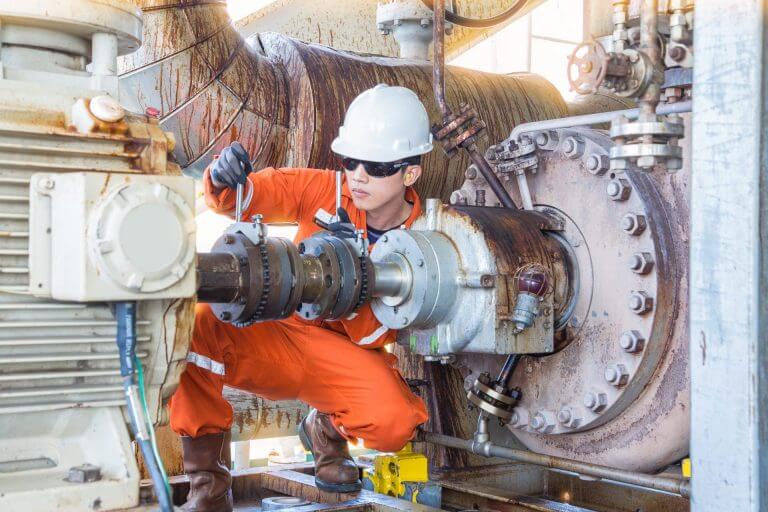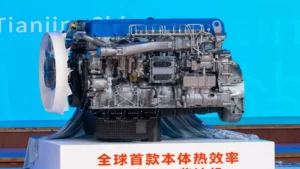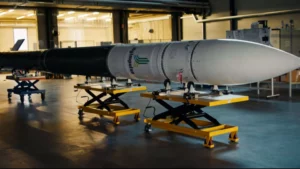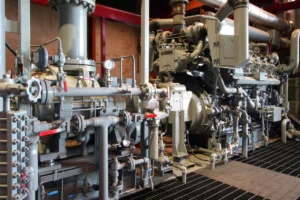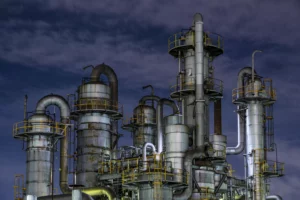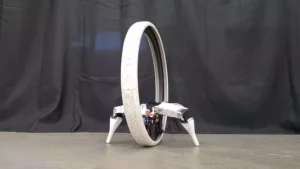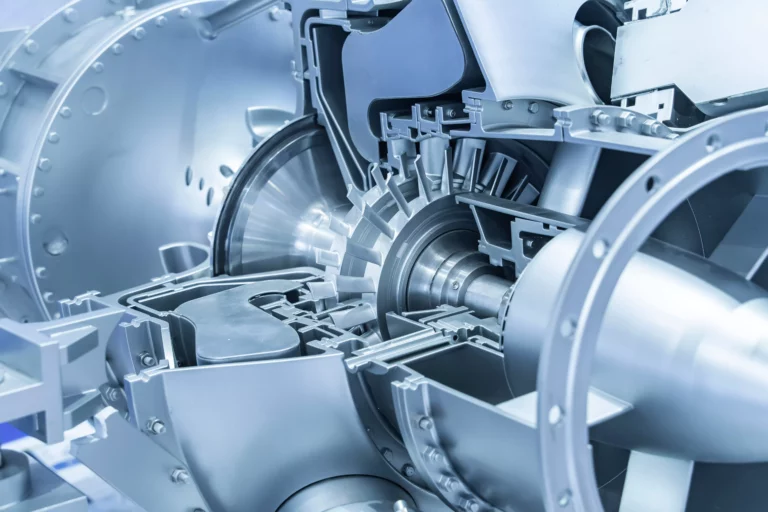Author. TSU. José López, January 11, 2023.
Introduction
Through a vibration analysis, the predictive maintenance technicians of rotating equipment are able to monitor, analyze the failures and condition of the machinery components and obtain the most accurate diagnosis possible.
In this article, a brief exposition is made on the typical analysis methods, such as: time domain, frequency domain, modal analysis, time wave, phase measurement, among others; as well as, the most important concepts and the necessary tools to carry out the analysis of the machinery.
There is a big difference between detecting an abnormal condition in rotating equipment and analyzing the root cause of a problem in that equipment. For example, if we replace a bearing that exhibits high vibration wear, it may solve the problem. However, when another possible abnormal condition is present in rotating equipment and goes undetected, it can cause the bearing to wear out prematurely.
If these works are not carried out, a condition monitoring predictive maintenance program is not being executed, in any case, only a change of parts would be carried out without other considerations.
On the other hand, it is essential that the incipient signs of abnormal conditions presented by the equipment are detected sufficiently in advance to be able to plan and execute repair and normalization actions in order to minimize machine downtime.
Once the anomaly is detected, a cause and effect study will be carried out, under the Root Cause Analysis (RCA) methodology to direct our actions towards the location of the root cause of the detected problem. This will prevent the event that caused the failure from repeating itself.
What is vibration?
It is defined as the reaction or behavior of the mechanical components of a machine when they are subjected to internal and external forces.
Most rotating equipment problems manifest as excessive vibrations, we use these signals as an indication of the mechanical condition of the machine.
Vibration measurement points
It is important to know where to place the vibration sensor”, for example, in a centrifugal pump (Figure 1), the inspection points for vibrations must correspond to the center line of the axis, on the bearing or bearing pockets. Ensure firm mounting on a solid part. Whenever possible, make measurements in the horizontal (H), vertical (V) and axial (A) directions of each bearing.

Safety is the priority for selecting vibration monitoring points. On the coupling side, it should not be measured in the axial direction unless all safety guarantees are met. Some parts of the pump, such as the mechanical seals and their pipes, are usually hot, care must be taken not to make contact with these parts, a measuring instrument cable in contact with a hot pipe can burn (Figure 2 ).
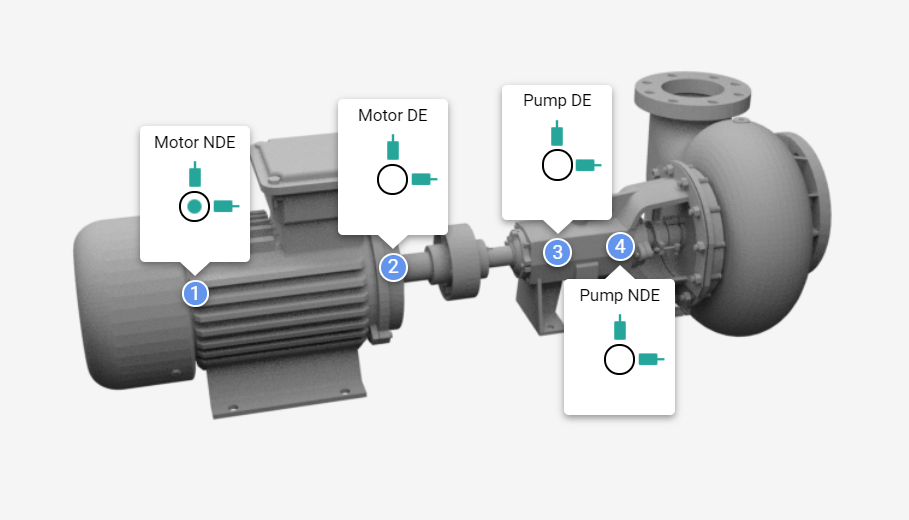
Why analyze vibrations?
Each mechanical defect generates vibration in a unique way. Therefore, we analyze the type of vibration to identify its cause and recommend the appropriate normalization measures. When we perform the analysis of the collected data, we observe two components of the vibration signal: its amplitude and its frequency, (Figure 3).
Frequency is the number of times an event occurs in a given period (a period denoted by T), it is the time required for a complete cycle of vibration to pass through a given point. The event being a cycle of vibration.
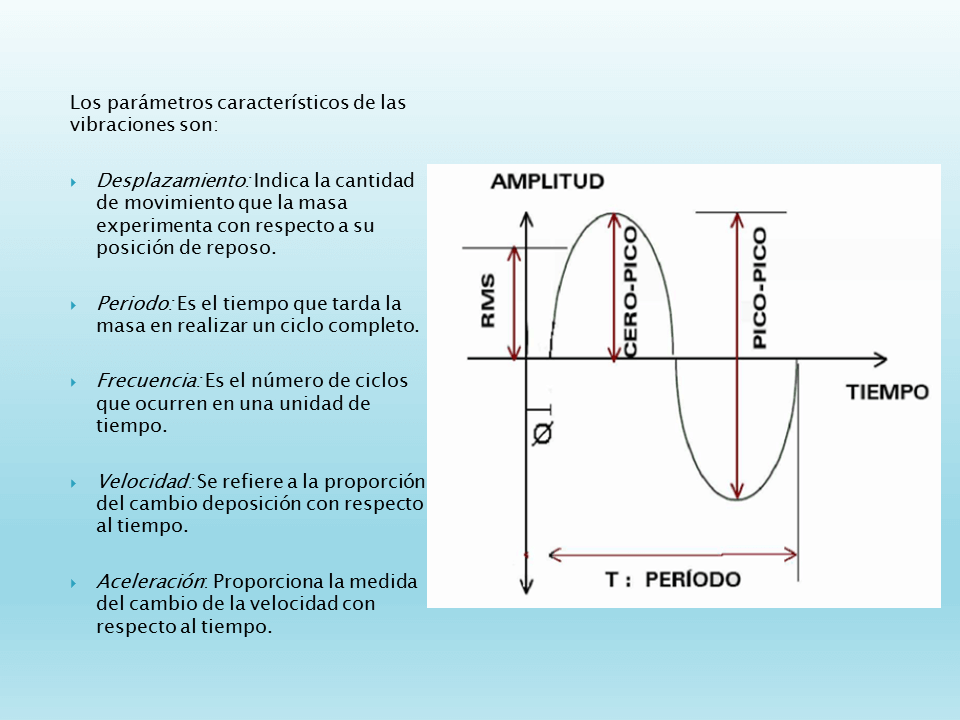
The frequency at which the vibration occurs indicates the type of fault. That is, certain types of faults present a typical behavior that occurs at certain and certain frequencies. When we manage to establish the frequency at which the vibration occurs, we obtain a more defined image of what could be causing it.
The amplitude is the size of the vibration signal. This amplitude determines the severity of the fault. The greater the amplitude, the greater the vibration and obviously the greater the problem.
Overall vibration (OVERALL)
It is the total vibrational energy measured within a frequency range. When we proceed to measure the general vibration of the machine (Overall) of a machine and compare that reading with its normal value determined in the vibration severity criteria tables for machines, this will indicate the current state of the machine. An Overall reading higher than normal will obviously be indicating that something is causing some component of the machine to vibrate more.
Vibration is considered the best operating parameter to measure low frequency dynamic conditions such as unbalance, mechanical looseness, misalignment, structural resonance, soft foundation, shaft deflection, bearing wear. Permissible vibration limits for centrifugal pumps can be found in API 610 or ISO 10816-7, (Figure 4).
The most efficient and reliable method of evaluating vibration severity is to compare the most recent general reading with previous readings; for the same measurement, which allows you to see how the vibration values of the measurement are changing, this is the trend over time.
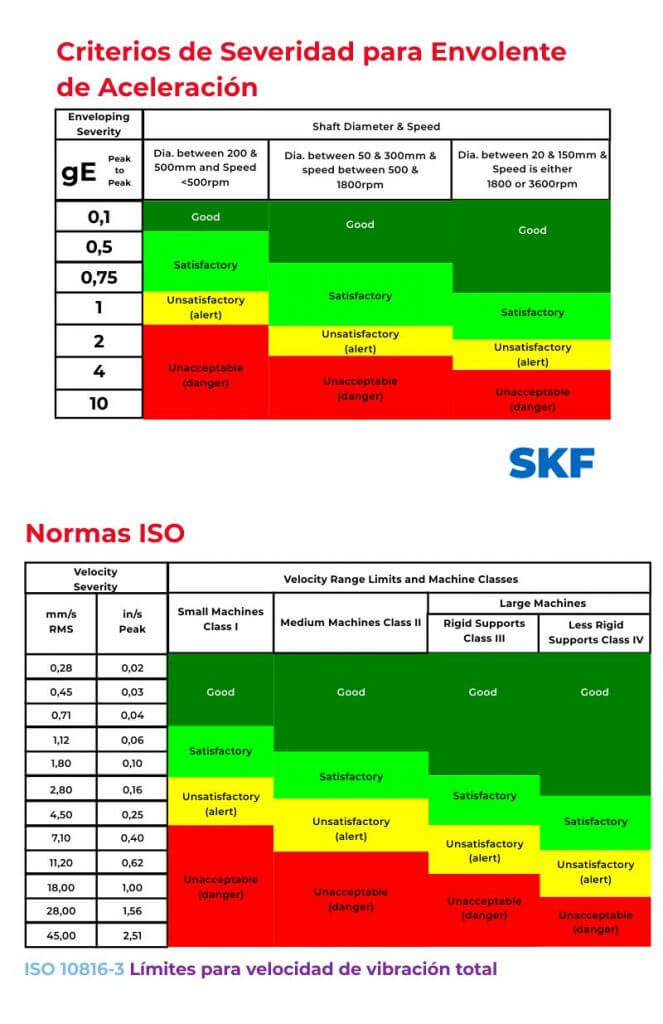
The most used method to detect problems in a machine is to compare the default values over time, since each device has a unique behavior in its operation. Taking as a basis that some components of the machine present a certain amount of vibration that would be considered an abnormal condition for most machines, but that is normal for them. Depending on these results, it is recommended to check the alignment of the equipment (Figure 5).
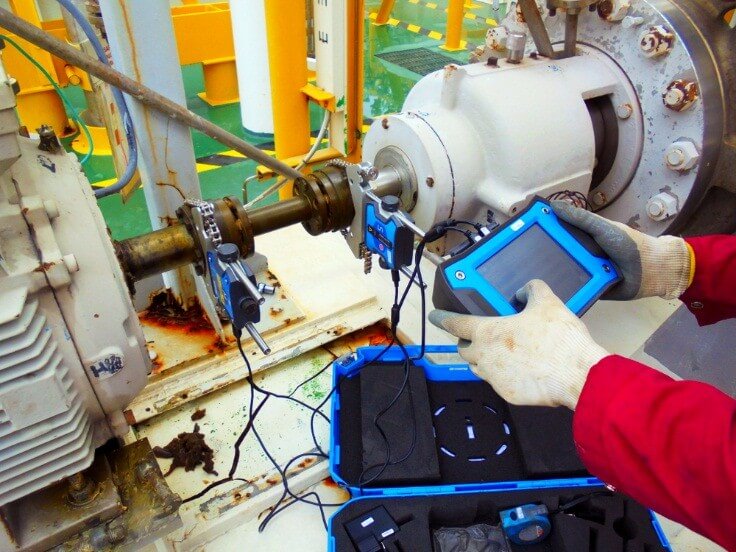
Finally, vibration analysis is a technique used to identify and predict mechanical anomalies in industrial machines, measuring vibration and detecting at what frequencies they occur. These vibrations are recorded by an accelerometer and the data processed by a spectrum analyzer. When this technique is applied for predictive maintenance, it significantly improves the efficiency and reliability of the machine.
To maintain the proper functioning of the machine, it is recommended to regularly monitor the vibration of its equipment.
- Study and know the machine.
- Keep the machine clean
- Know the noises and differentiate from sudden changes in noises.
- Observe and verify possible lubricant leaks, loose or loose screws.
- And very importantly, in the event of detecting unusual behavior on any machine, report it immediately. It could not only avoid sudden failure, but also save your colleagues’ lives.
Conclusion
The use of vibration analysis is very important, through it, problems caused by incorrect installation, machining errors, insufficient lubrication, incorrect alignment of shafts or pulleys, loose bolts, bent shafts and much more can be determined. In most cases, these problems can be detected long before the damage can be seen by the maintenance technician, and long before it damages other machine components. The application of vibration analysis, condition monitoring, or predictive maintenance has made great strides in increasing the useful life of machinery.
Bibliographic references:
[ 1 ] Web Site: www.skfreliability.com
[ 2 ] Moubray JM, Development in Reliability – Centered Maintenance.
[ 3 ] Bowers, S.V.; Integrated Strategy for Predictive Maintenance of AC induction motors.
[ 4 ] David Trocel GTS Trustworthiness CA www.trustworthiness.com.ve
About the Author

TSU with more than 40 years of professional experience in the Venezuelan Oil Industry, specifically in the activity of Technical Executor Leader in the Start-up in the area of Rotating and Static Equipment. Specialist technician in repair, start-up and maintenance of dynamic equipment for special purposes (turbogenerators, centrifugal and axial compressors, blowers, turbines), Technician in analysis and interpretation of vibration and predictive maintenance.



